6 things to know about Minami Takayuki, the creative director beyond Graphpaper and FreshService
Edit&Text by Yukihisa Takei(HONEYEE.COM)
Photo by Kiyotaka Hatanaka
Movie Directed by Ryoji Kamiyama
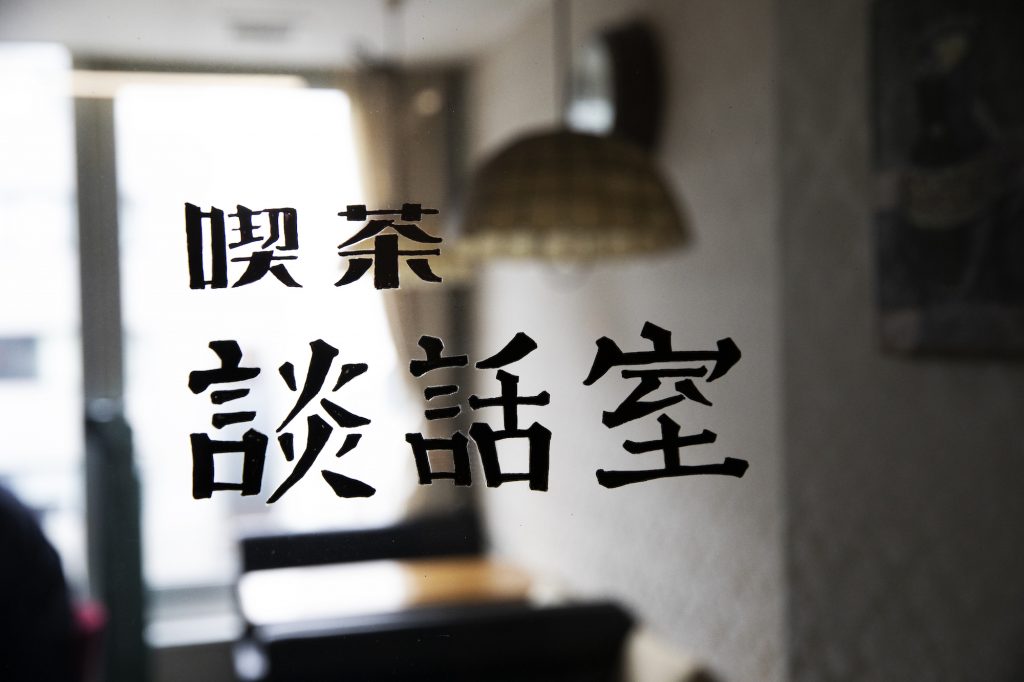
He is a truly multifaceted person. He is the director of popular Tokyo-based brands and shops Graphpaper and FreshService, and also runs alpha PR, which has several fashion brands as clients, and works on producing for large shopping complexes.
He has a rich experience in directing and interior designing not only for his own brands, but also for other brands, and also is a buyer who uses his discerning eye to find a wide range of things from across Japan and overseas. He is also actively working as a curator, promoting the artists he discovers through Gallery Hakushi.
Find out about the creator, Takayuki Minami. HONEYEE.COM takes a close look at this multifaceted profile from six different aspects. The interview took place in the “Kissa Danwashitsu (Japanese coffee shop)" that Minami created within the alpha.co.ltd office.
1.Minami Takayuki as CEO at alpha.co.ltd and alpha PR
Jingumae, Tokyo, is home to the office of alpha.co.ltd, which is Takayuki Minami's base and where he is the CEO of alpha.co.ltd, and the showroom of one of his businesses, alpha PR. Alpha PR currently represents about 30 brands. Many of them are high-profile brands in the market. We’ve asked him about his approach as PR director.
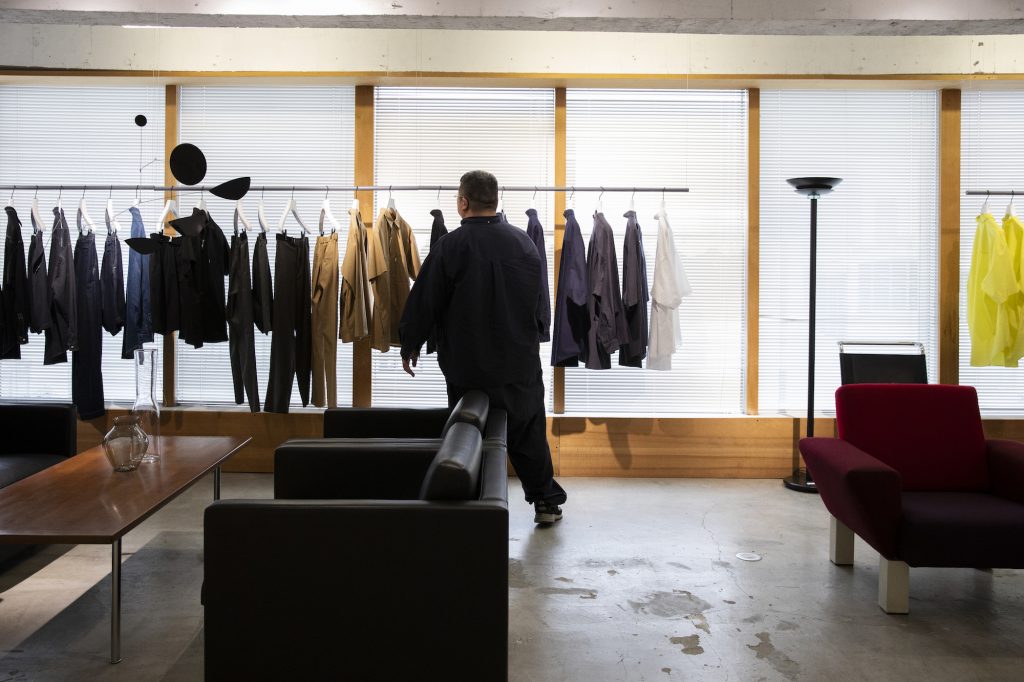
- How did you shape yourself as a PR director, Minami-san?
Minami: I was working in a hair salon when I was around 20, then, I joined an H.P. France-affiliated company. There was an in-house competition for a project to open a store on Cat Street when I was 24, and my proposal was accepted, so I produced a multi-label store, CANNABIS.
I started getting involved in PR work from there, but I wasn't doing it properly until working as a director at 1LDK when I became a freelancer. After I left my position as director of 1LDK, I was asked to do PR for a few brands, so I needed a proper office to work, so I rented a space in a building at the end of an alleyway in Harajuku, where Graphpaper Aoyama is currently located.
- Many of the brands you represent at alpha PR are high-profile and I feel that they have good reputations among stylists. Do you have any particular basis in your mind when deciding on brands to work with?
Minami: I am most concerned about the balance between quality and creativity. If the quality is good but there is no creativity, I can't promote it. The other thing is whether I can fall in love with the brad or not (laughs). I'm the type of person who can't tell everyone that something is good if I don't think it's good, and I started this PR company because I want everyone to know about great things. I think it also comes from my experience as a sales associate at CANNABIS and other stores.
- You’re doing PR, but you're looking at the end-user in the end.
Minami: That's right, PR is normally B to B business, but I aim to cover B to C. If the brands don't make any sales, there is no budget for them to pay for us to do their PR.
The basis is "whether I can fall in love with the brand or not."
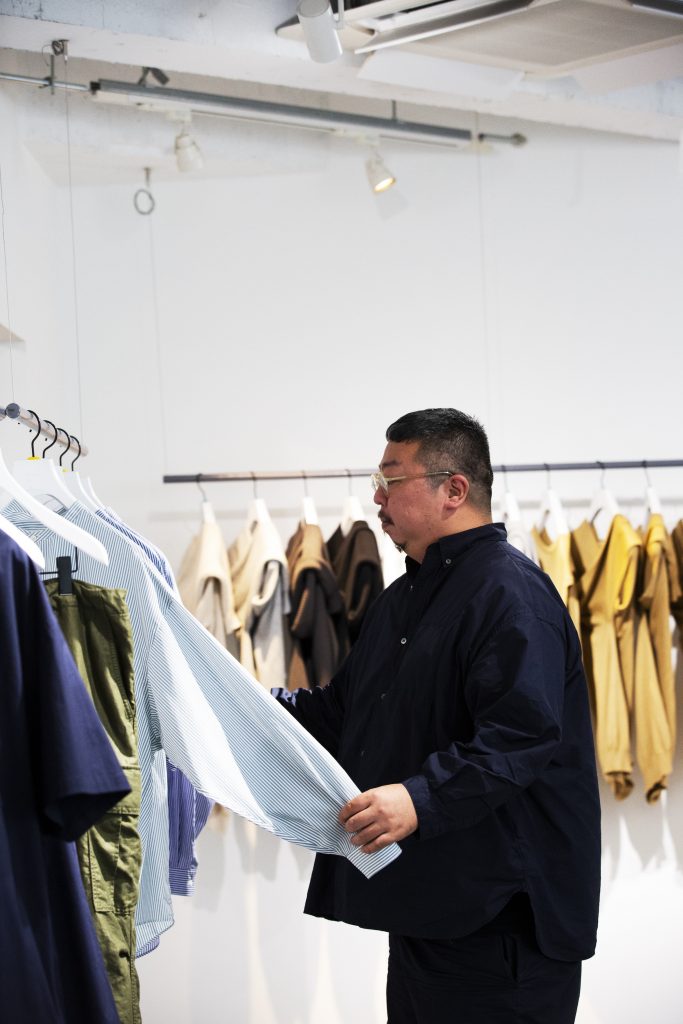
- I feel like most brands represented by alpha PR are simple, but the materials are high-quality and also functional.
Minami: Maybe it's because I'm the one who selects the brands, but basically I want each brand to do whatever they want. Our job is to convey what the client wants to do without controlling them and without devaluing what they want to do.
- So you value the creativity of each brand?
Minami: Yes, otherwise it wouldn't be interesting. I think all our staff think in the same way.
- Having seen many brands, do you have any principles for a "successful brand"?
Minami: That's what I want to know the most (laughs).
2. Takayuki Minami as the director of Graphpaper
Graphpaper is currently one of the most popular brands in Tokyo. Many people may know the name Takayuki Minami through this brand. However, the background to its growth as a brand is surprisingly pure and unexpectedly unplanned. Find out why Takayuki Minami created Graphpaper and what his true intentions are.

- Graphpaper started as a kind of 'uniform for the staff' at Graphpaper, which is a multi-label store. Over the years, the range of items has increased and it has now become one of the most popular brands. But I had an impression that you didn't intend to expand the brand that much in the early days.
Minami: No, not at all. I wanted the staff outfits to be ‘plain', so I just let them wear uniforms and experimented to see if they could become a part of the shop space. That was the shop coat, which we still sell today. The "chef trousers” is another example of this, which are also one of our standard items.
- The range of products expanded like that, and as a result, so did the number of stockists.
Minami: Yes, that's right. I argued with the PR team, saying, "I don't need a brand name, so can't we just leave it out?" (laughs). The PR team was against it and said, "We won't be able to promote anything without a brand name", so we ended up naming the brand Graphpaper because it was too much trouble to think of a brand name. That often leads to the misunderstanding that it's an original brand by a multi-brand shop.
“I am not very comfortable with the idea of having different items every season”
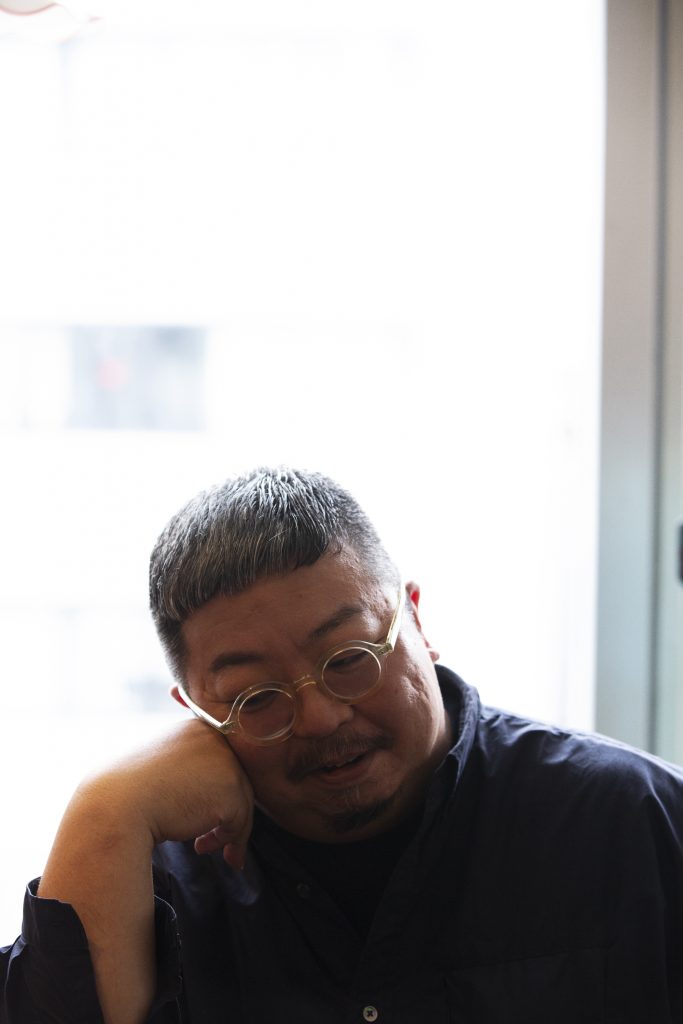
- Graphpaper's clothes are very much based on classic ideas. Rather than seasonality, I get the impression that more and more continuity items are added to the collection.
Minami: First of all, I am not very comfortable with the idea of having different items every season. I wouldn't wear new clothes that often, and I’m the type of person who continues to wear the same clothes if I like them. For example, if I like a certain item from a certain brand and go to buy it again, I am often told that it's not available that season. I always wondered why that was. I was thinking like, do men change their clothes every season like that, but isn't that kind of lame?
- A lot of men are like that. I do get it.
Minami: That's why Graphpaper has a lot of continuity items. Also, when it comes to the production districts, fabric makers and factories, it's good for them to keep working together for the long term. Also, we have the fundamental concept of ‘no-sale', so that also came into play. We have a lot more items in our standard range, but this may be possible because we think about it in a menswear way.
“fashion designs have been run out in the 20th century”
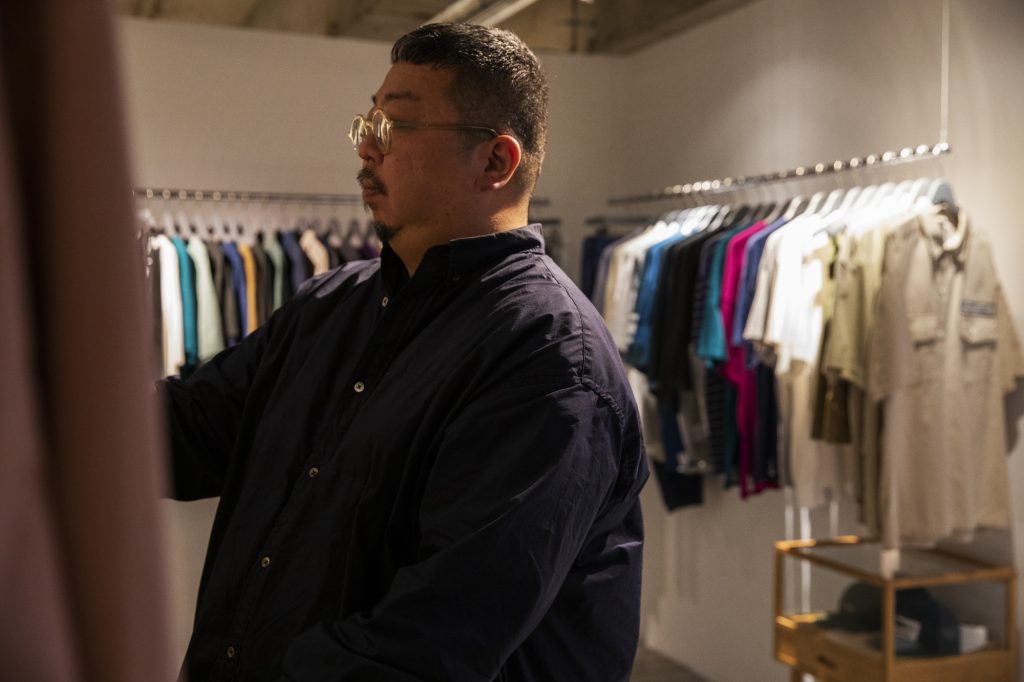
- But even the standard products have been finely updated.
Minami: It's similar to the sense of updating products such as consumer electronics. I am a director, rather than a designer, so I don't feel like I am doing the designing at all. I have more of a craftsman's approach. Rather than trying to create something completely new, I create things that I think, "Why isn't there something like this?". It's written in the brand concept, but men's fashion designs have been run out in the 20th century, so what I do is more like a process of thinking about how to edit them.
- What does that precisely mean?
Minami: One thing is what is the most functional thing while living in a city. Another thing is respect for materials. I believe that the people who make the fabrics for our clothes are the true creators. I visit all the production districts in person and see how much I can make simple clothes without ruining the wonderful materials made by the people who produce them. It's like a sushi restaurant approach to making the most of the ingredients.
- Sushi restaurant is a very interesting example.
Minami: Most people might think that those who design clothes is the fashion designers, but I've been just doing creative direction all my life, and that's what I've done with clothes. The way I create spaces, shops and do PR hasn't changed at all. It's just that the outcome is clothing.
3.Takayuki Minami as the director of FreshService

FreshService is a label with a different style and charm from Graphpaper. The line-up includes daily necessities, mainly mass-produced goods carefully curated by Takayuki Minami and arranged in the FreshService way, as well as uniform-like daily wear.
"It's not expensive, but it's also a good mass-produced product"
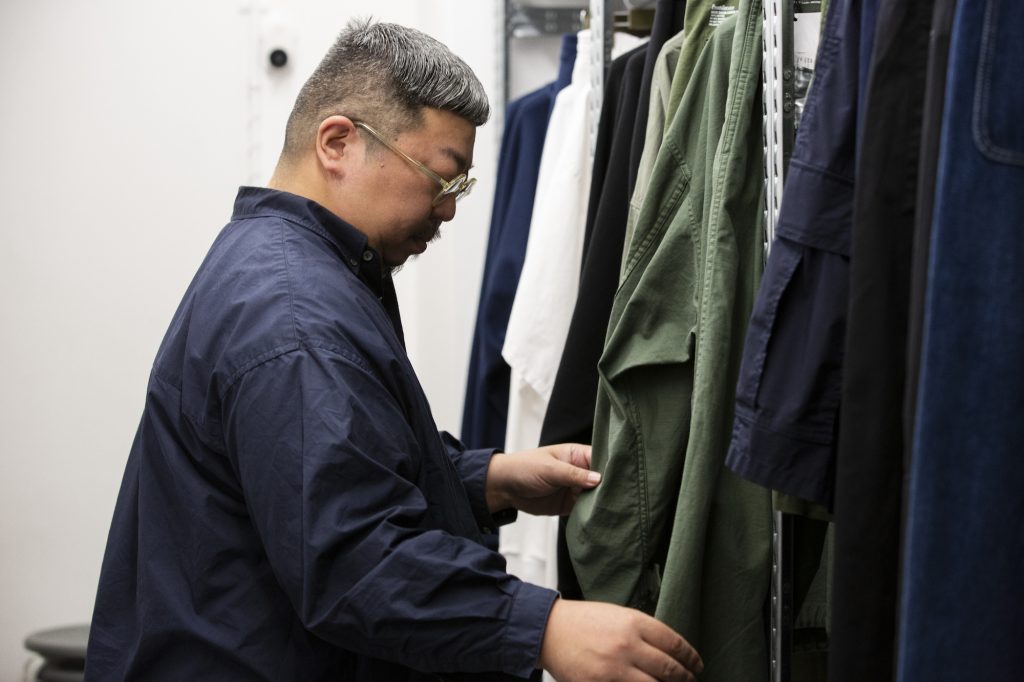
- FreshService is now established as a brand, but at first, it was more of a 'mobile pop-up shop' concept, I remember.
Minami: That was my first job after I became a freelancer. I was requested by The Conran Shop to do a pop-up shop, and I thought it would be fun to do a 'selective pop-up shop that sells what I think are the freshest things', so I came up with the name FreshService. The idea was that an imaginary courier company would open a pop-up shop, putting products in packing bags. But each time it got harder and harder to gather products from various brands, and I couldn't handle it in the end.
- I can imagine it's hard to prepare for a pop-up store every time.
Minami: From there, I tried to think about how I could manage that, and I came up with the concept of 'tools'. In a way, men's clothes are like tools, aren't they? Also, men basically like tools. So in my mind, at the same time as simply making high-quality products like Graphpaper, I also like the good side of things that are mass-produced and not expensive. That is the basis of FreshService.
- How do you select products in particular?
Minami: For example, when it came to towels, I always wondered why there were no khaki-colored towels, so I made towels in khaki. Most things come from those very personal feelings. That's a very personal feeling. It’s the same thing with the stacking boxes, too. I made them just because I liked boxes but there were times when it was hard because the minimum production lot was too big (laughs).
(Continued in Part 2)
